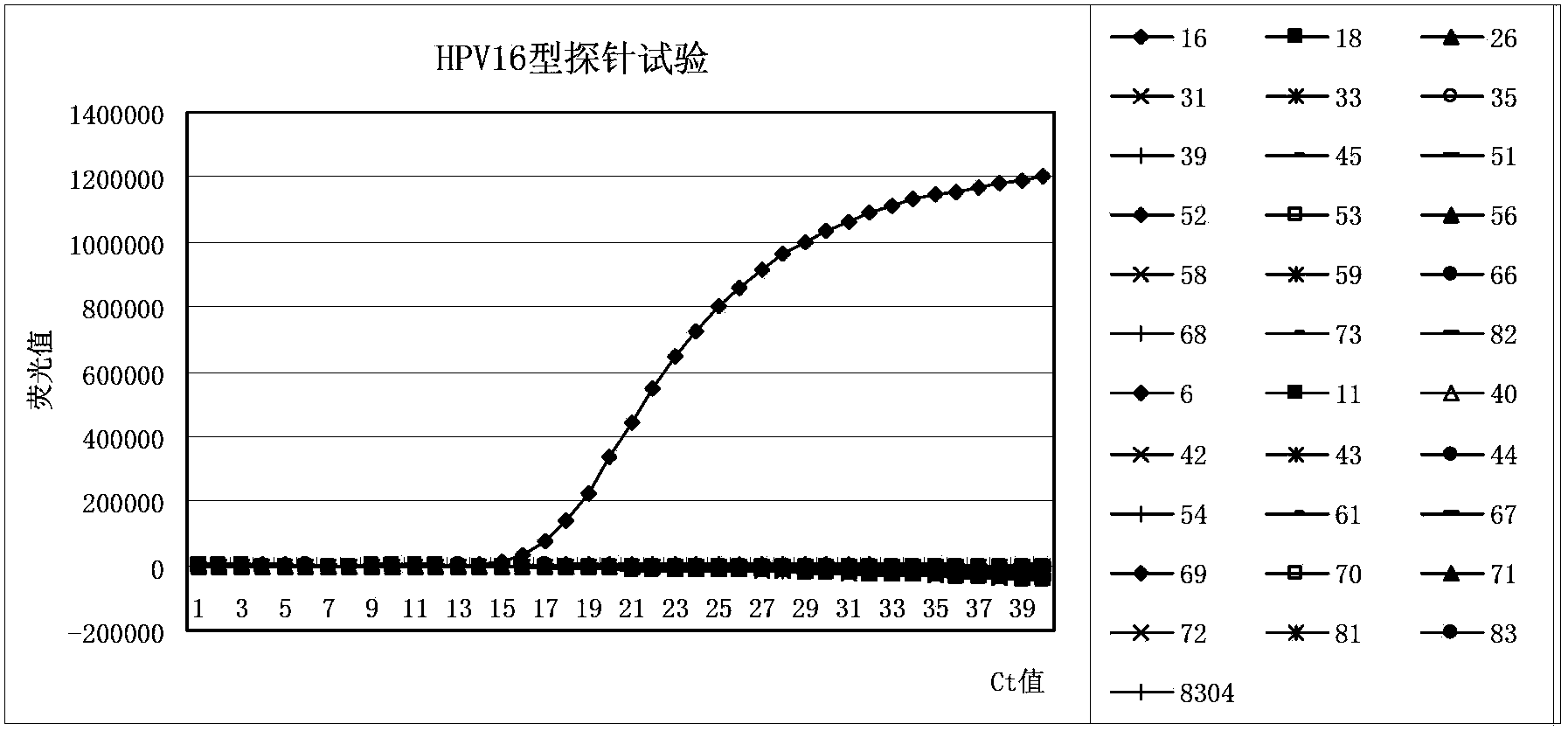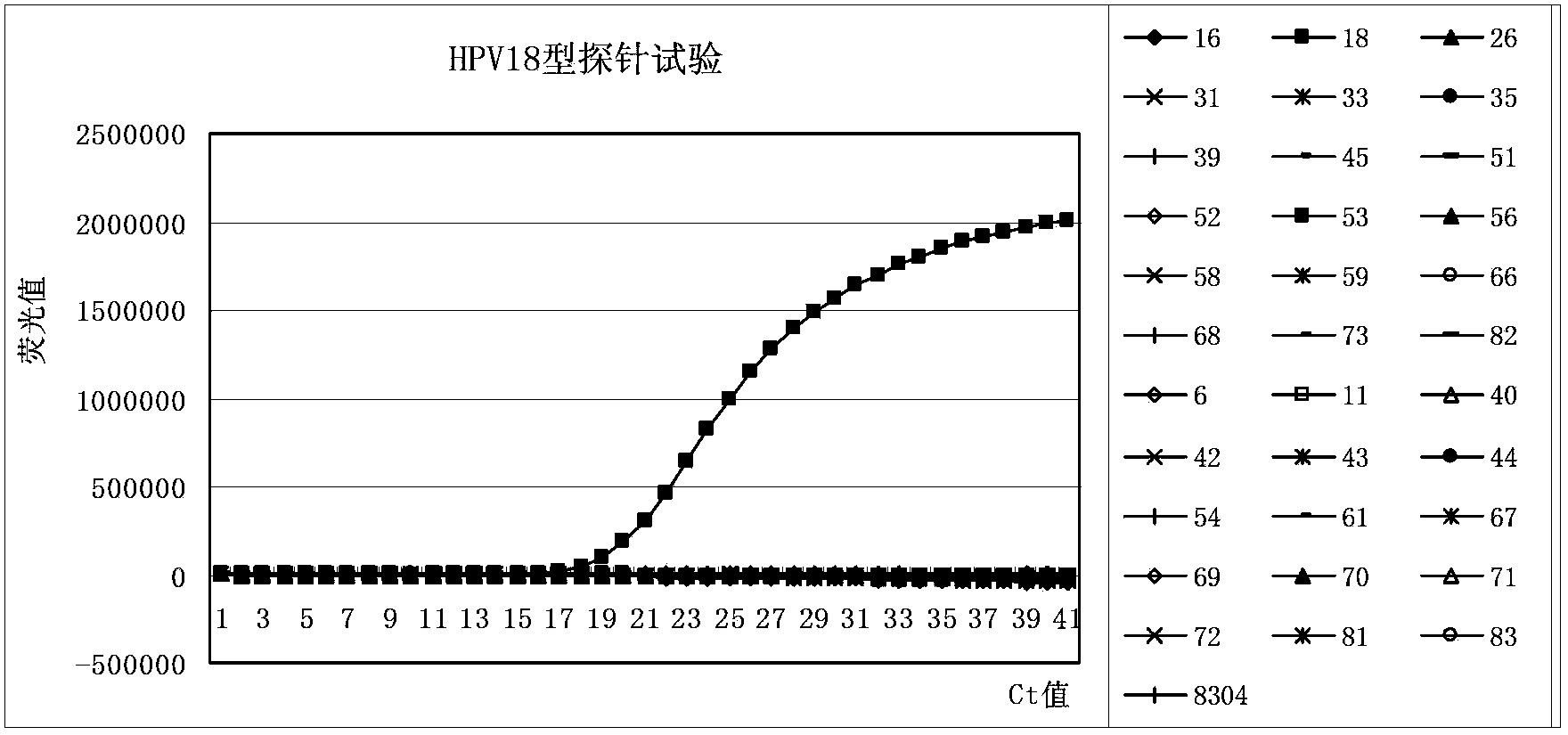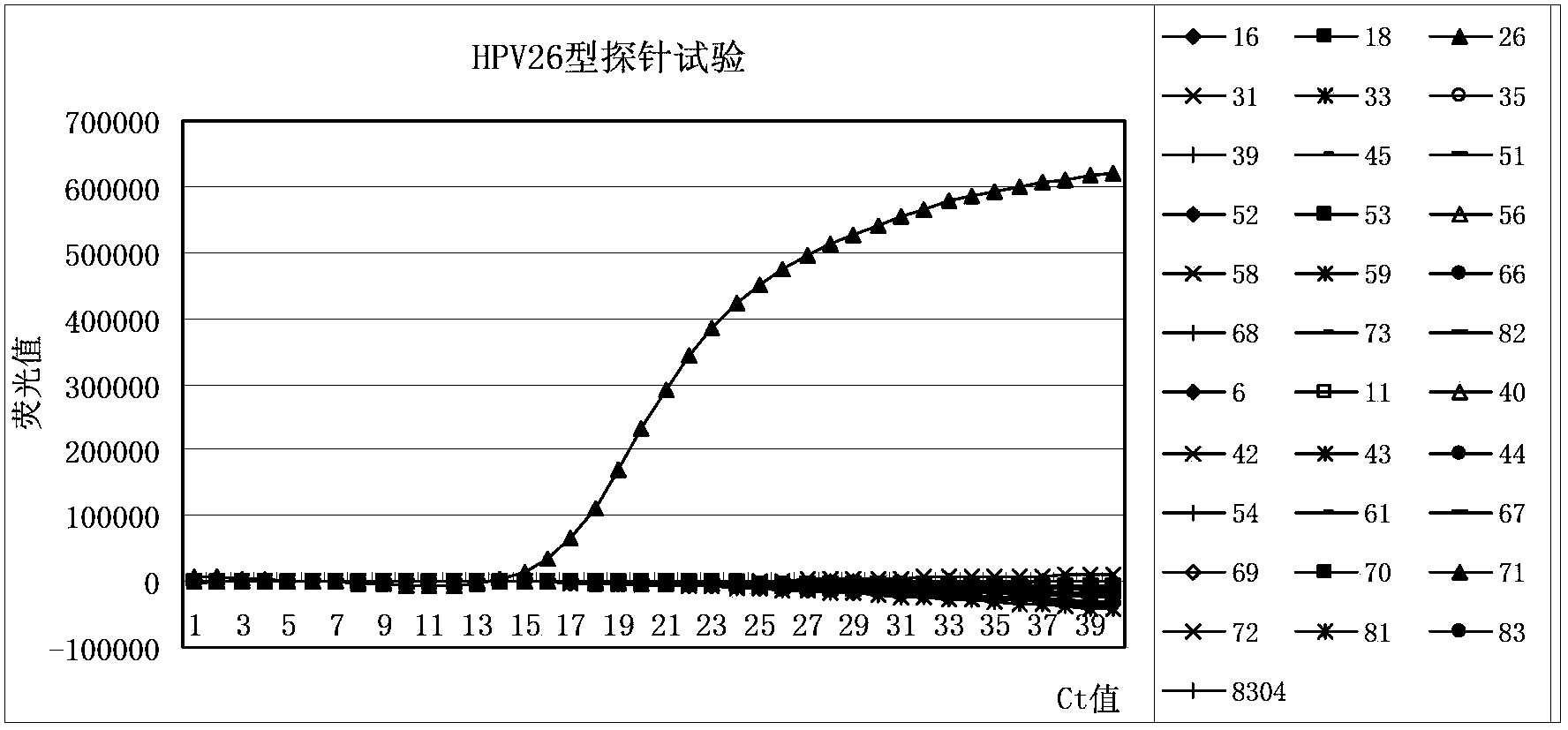Primer, probe and kit for fluorescence PCR (Polymerase Chain Reaction) detection of 18 high-risk human papilloma viruses
A technology for human papillomavirus and detection kits, applied in the directions of fluorescence/phosphorescence, biochemical equipment and methods, determination/inspection of microorganisms, etc.
- Summary
- Abstract
- Description
- Claims
- Application Information
AI Technical Summary
Problems solved by technology
Method used
Image
Examples
Embodiment 1
[0068] Example 1: Extraction of DNA
[0069] The HPV virus DNA is extracted by the magnetic bead extraction method (it can also be extracted by a fully automatic nucleic acid extractor). Its working principle and steps mainly include cell lysis, binding of nucleic acid and magnetic beads, washing the complex of magnetic beads and nucleic acid and eluting nucleic acid. The process of cell lysis is to destroy the cell structure and release the nucleic acid from the cell; the process of combining nucleic acid and magnetic beads is the process of purifying nucleic acid to remove impurities such as proteins, polysaccharides and other biological macromolecules. Washing the complex of magnetic beads and nucleic acid is to further purify nucleic acid and remove residues and trace salt ions on the surface of the complex. The elution of nucleic acid is to separate the nucleic acid from the magnetic beads to obtain the required high-purity nucleic acid.
Embodiment 2
[0070] Example 2: Primer Design and Synthesis
[0071] The DNA sequences of the L1 regions of each subtype of human papillomavirus were called out from GeneBank, and then the sequences of the L1 regions of each subtype were compared by DNAStar software, and primer sequences were designed and synthesized in the relatively conserved regions of the high-risk types. The primer sequences designed in the present invention have:
[0072] Primer 1 for amplifying human papillomavirus, its base sequence is shown in SEQ ID NO:1;
[0073] Primer 2 for amplifying human papillomavirus, its base sequence is shown in SEQ ID NO:2;
[0074] Primer 3 for amplifying human papillomavirus, its base sequence is shown in SEQ ID NO:3;
[0075] Primer 4 for amplifying human papillomavirus, its base sequence is shown in SEQ ID NO:4;
[0076] Primer 5 for amplifying human papillomavirus, its base sequence is shown in SEQ ID NO:5;
[0077] Primer 6 for amplifying human papillomavirus, its base sequenc...
Embodiment 3
[0081] Example 3: Probe Design and Synthesis
[0082] The DNA sequences of the L1 regions of each subtype of human papillomavirus were retrieved from GeneBank, and then the sequences of the L1 regions of each subtype were compared by DNAStar software. Molecular beacon probes for each high-risk type were synthesized. A total of 18 probes were designed, and the probe sequences are as follows:
[0083] Specific detection of human papillomavirus type 16 molecular beacon probe, the base sequence of which is shown in SEQ ID NO:7;
[0084] Specific detection of human papillomavirus type 18 molecular beacon probe, the base sequence of which is shown in SEQ ID NO:8;
[0085] Specific detection of human papillomavirus type 26 molecular beacon probe, the base sequence of which is shown in SEQ ID NO:9;
[0086] Specific detection of human papillomavirus type 31 molecular beacon probe, the base sequence of which is shown in SEQ ID NO:10;
[0087] Specific detection of human papillomavi...
PUM
 Login to View More
Login to View More Abstract
Description
Claims
Application Information
 Login to View More
Login to View More - R&D
- Intellectual Property
- Life Sciences
- Materials
- Tech Scout
- Unparalleled Data Quality
- Higher Quality Content
- 60% Fewer Hallucinations
Browse by: Latest US Patents, China's latest patents, Technical Efficacy Thesaurus, Application Domain, Technology Topic, Popular Technical Reports.
© 2025 PatSnap. All rights reserved.Legal|Privacy policy|Modern Slavery Act Transparency Statement|Sitemap|About US| Contact US: help@patsnap.com



